Abstract
We have examined the hypothesis that people who develop contact allergies to environmental substances do so because they have heightened susceptibility. Analysis of data from 2200 consecutive patients tested with the 20 commonest antigens in a patch-test clinic showed that more people developed multiple contact allergies than would be predicted from the frequency of single allergies; the excess was too great to be explained by chance and increased with number and rarity of the combinations of sensitizers. The possibility that this was due to enhanced individual susceptibility to sensitization rather than concomitant exposure to several sensitizers was confirmed by showing that patients with multiple allergies are more readily sensitized experimentally, and to a greater degree than normal, by dinitrochlorobenzene (DNCB), an unrelated antigen. The defect involves induction rather than expression of sensitivity. Amplification of the response to DNCB is proportional to susceptibility (calculated from the ratio of observed prevalence of multiple allergies to that predicted from the prevalence of single allergies) throughout the range from normal subjects, through those with a single sensitivity, to those with rare, multiple allergies. Therefore, we conclude that individual susceptibility is an important factor in the development of contact dermatitis, and occurs by a non-antigen-specific amplification of immune sensitization.
Full text
PDF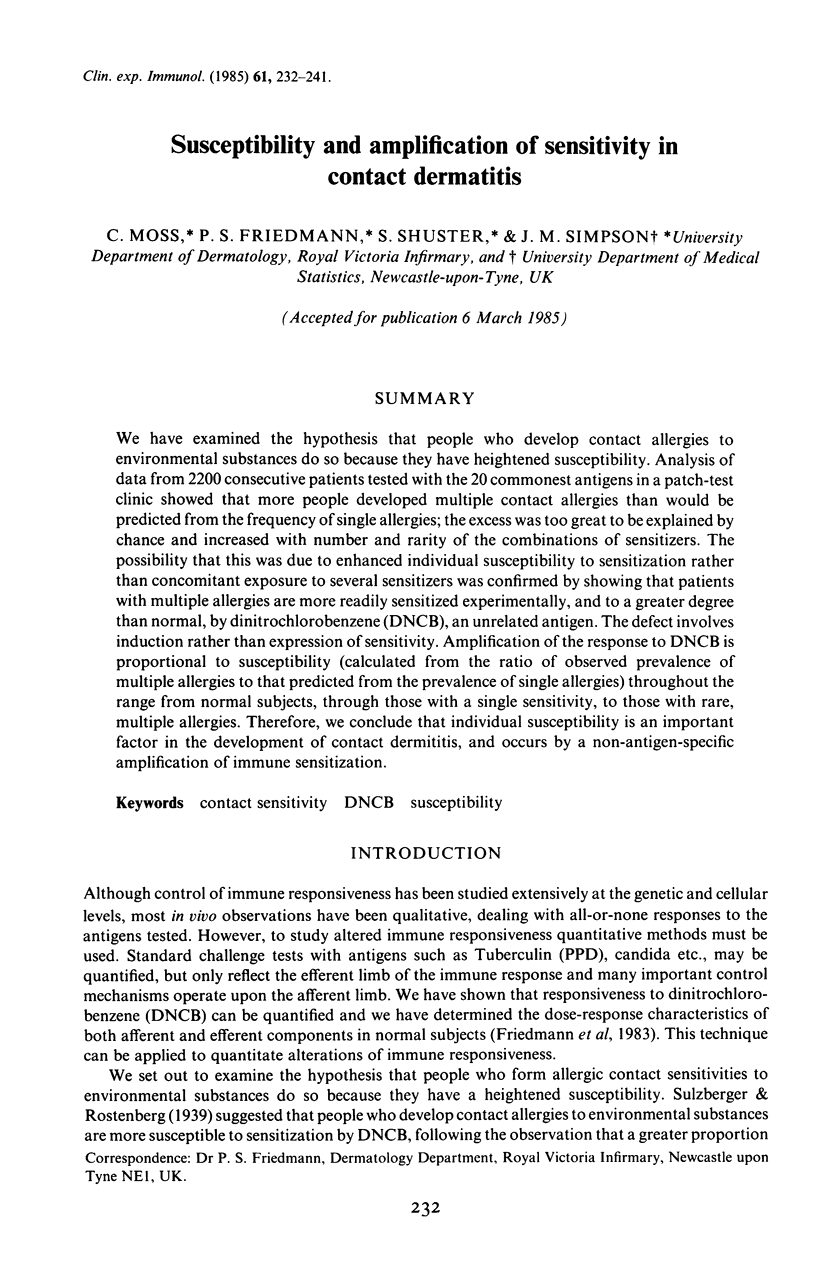
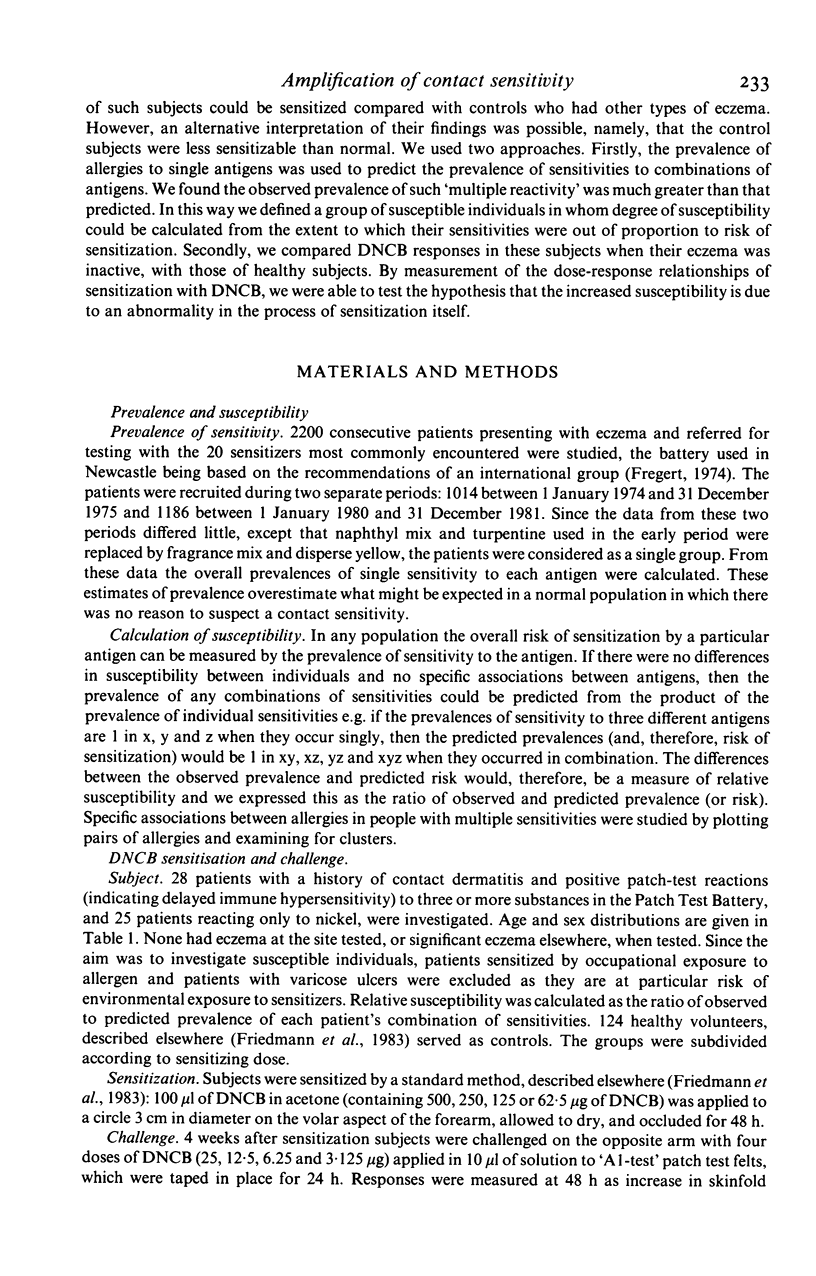
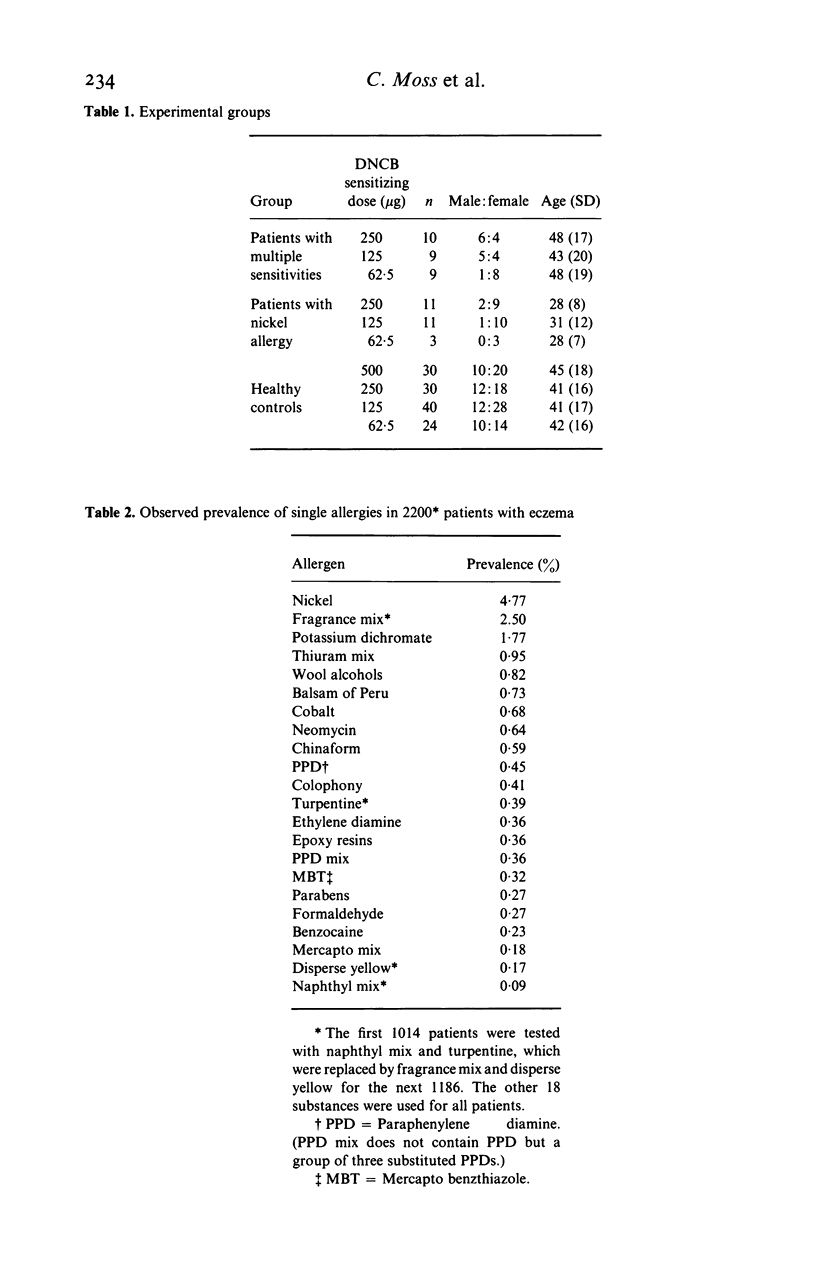
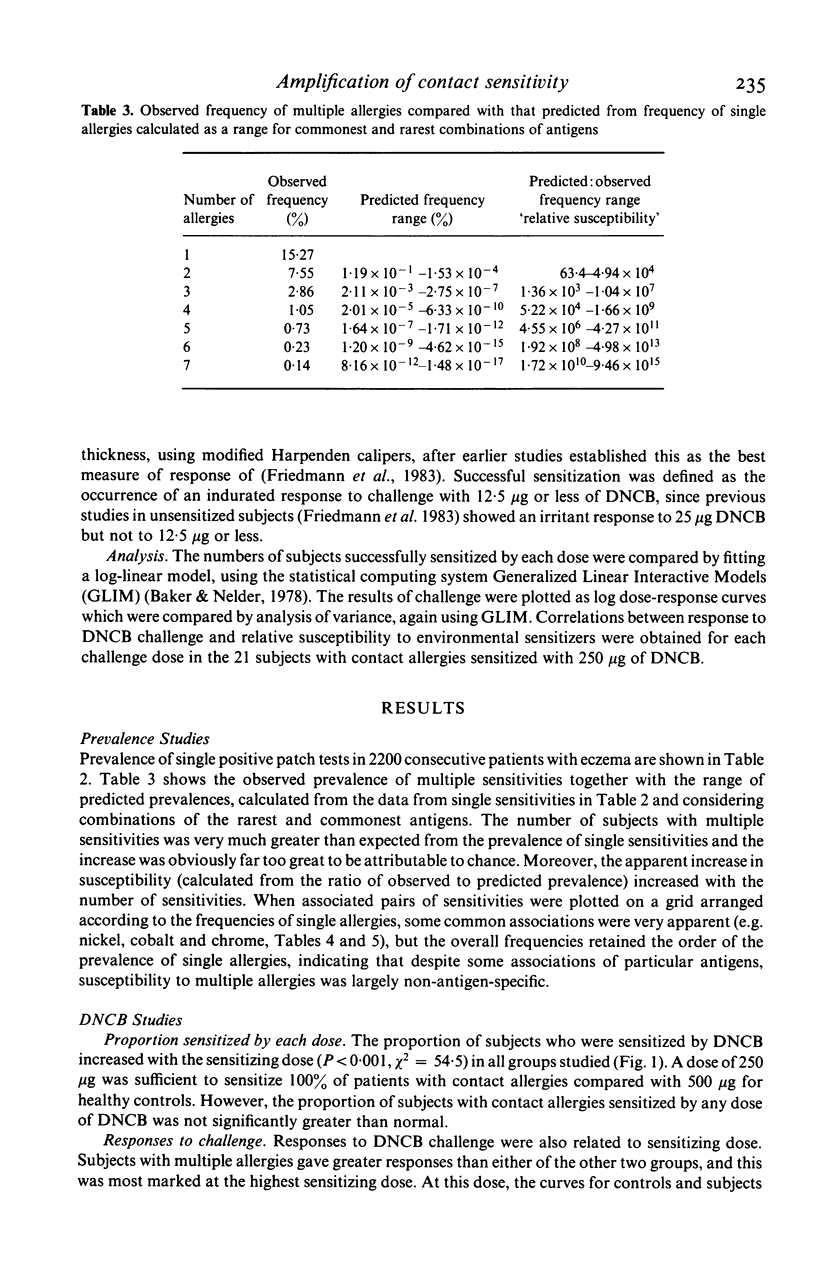

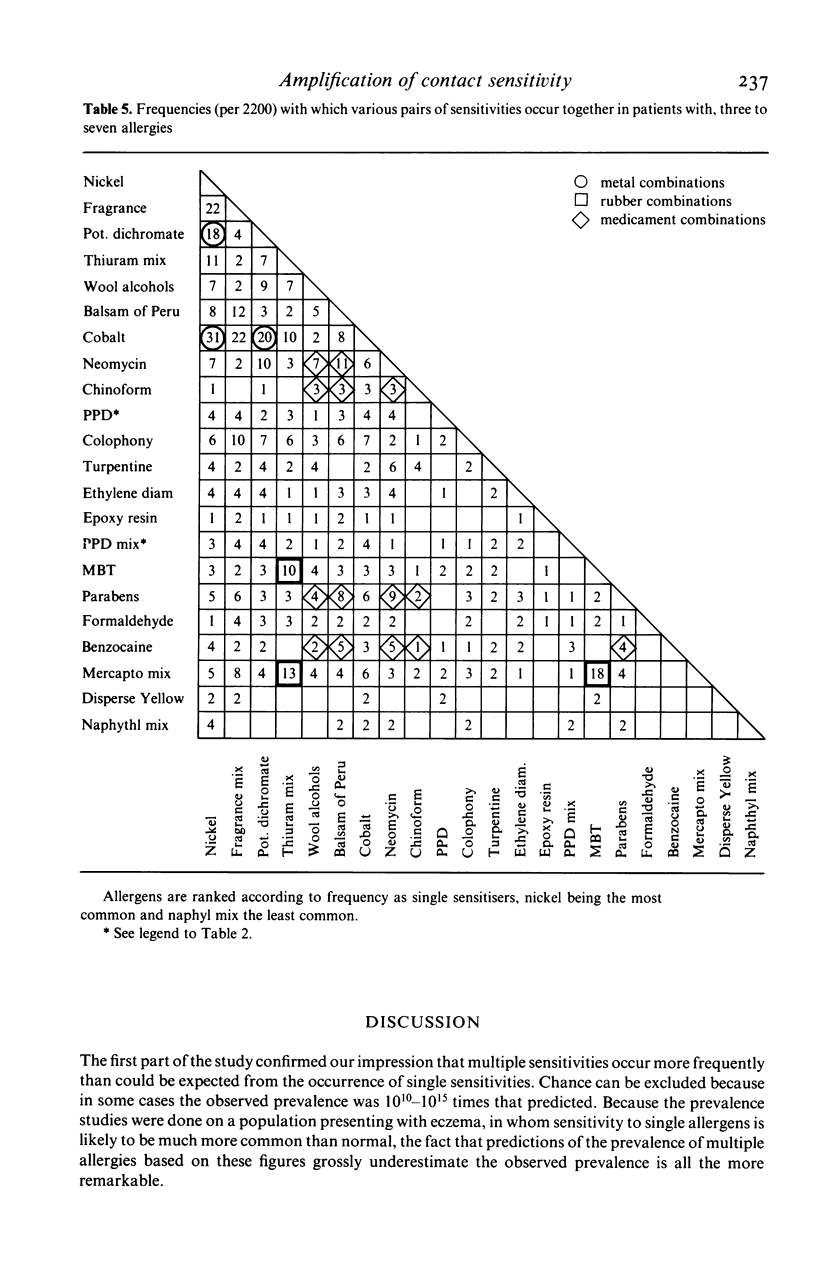
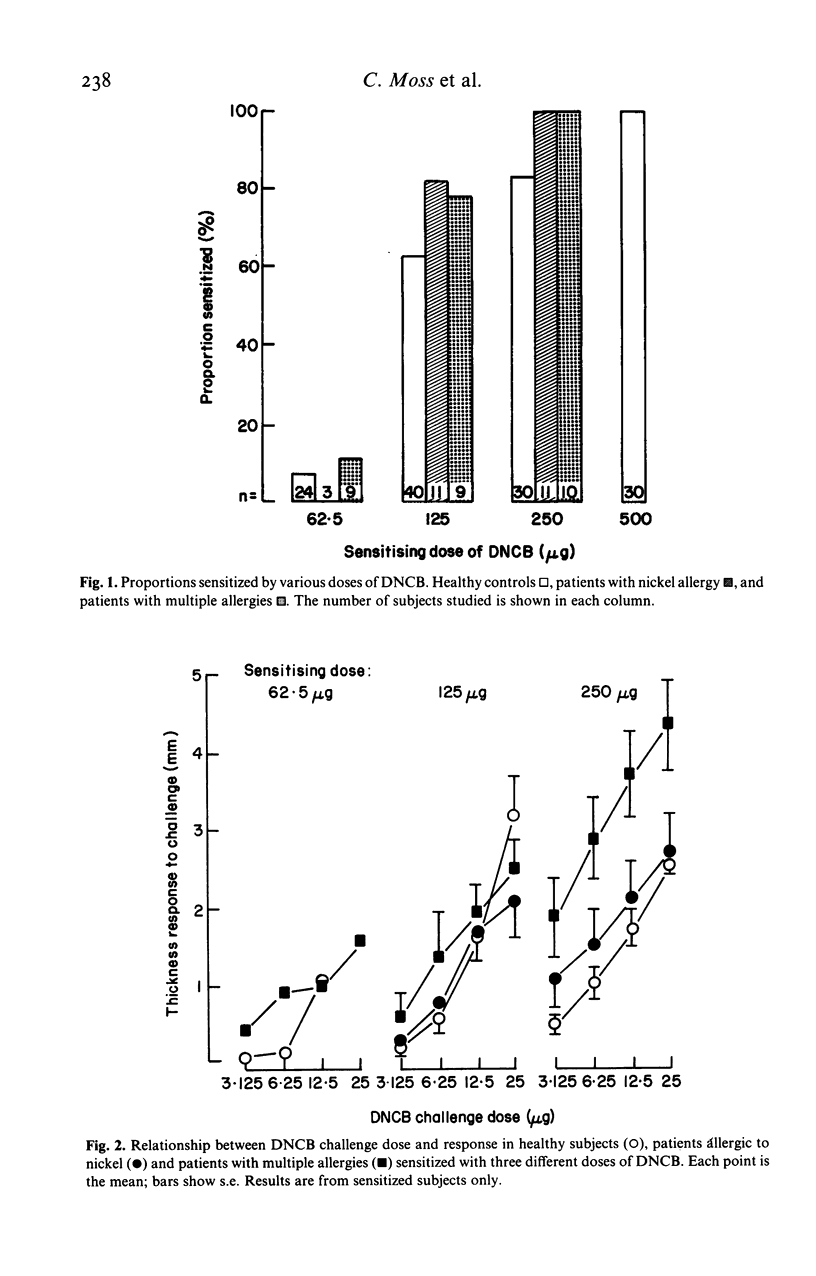
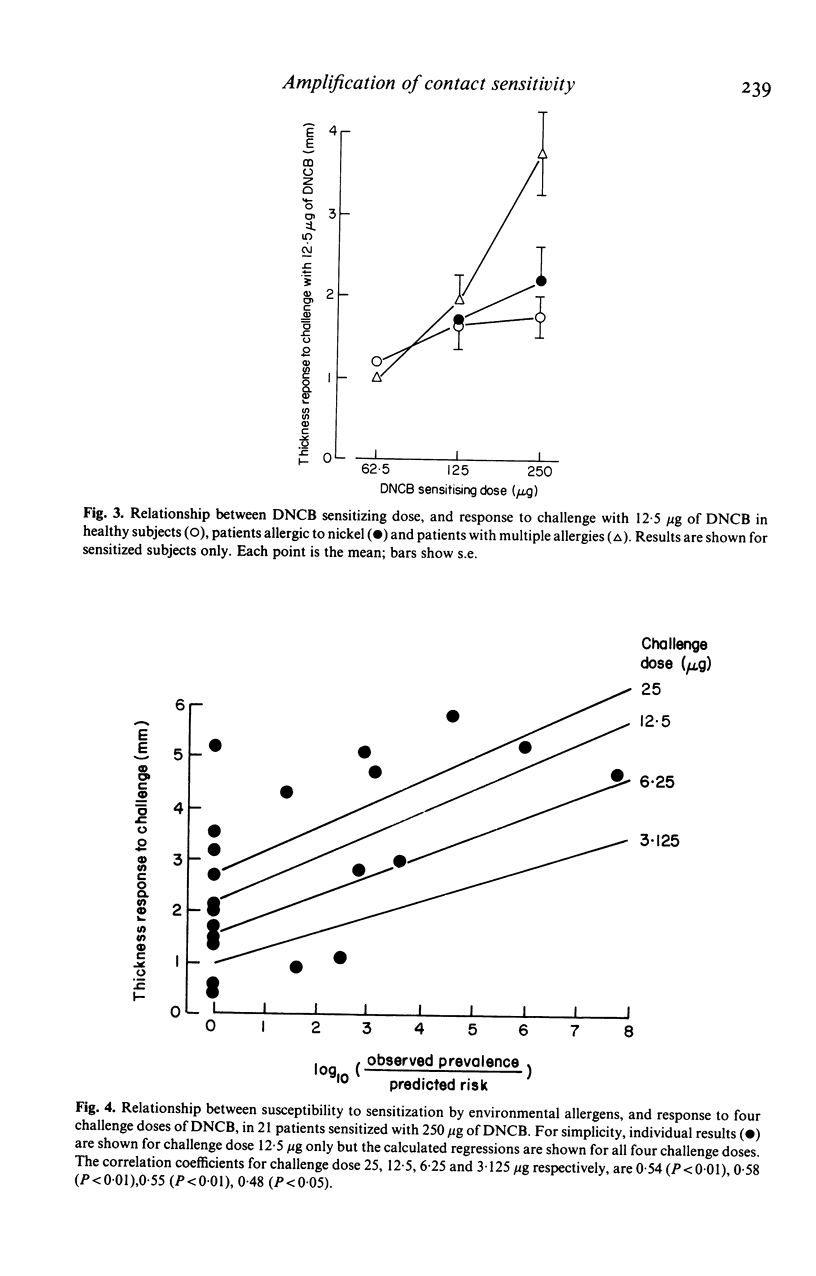

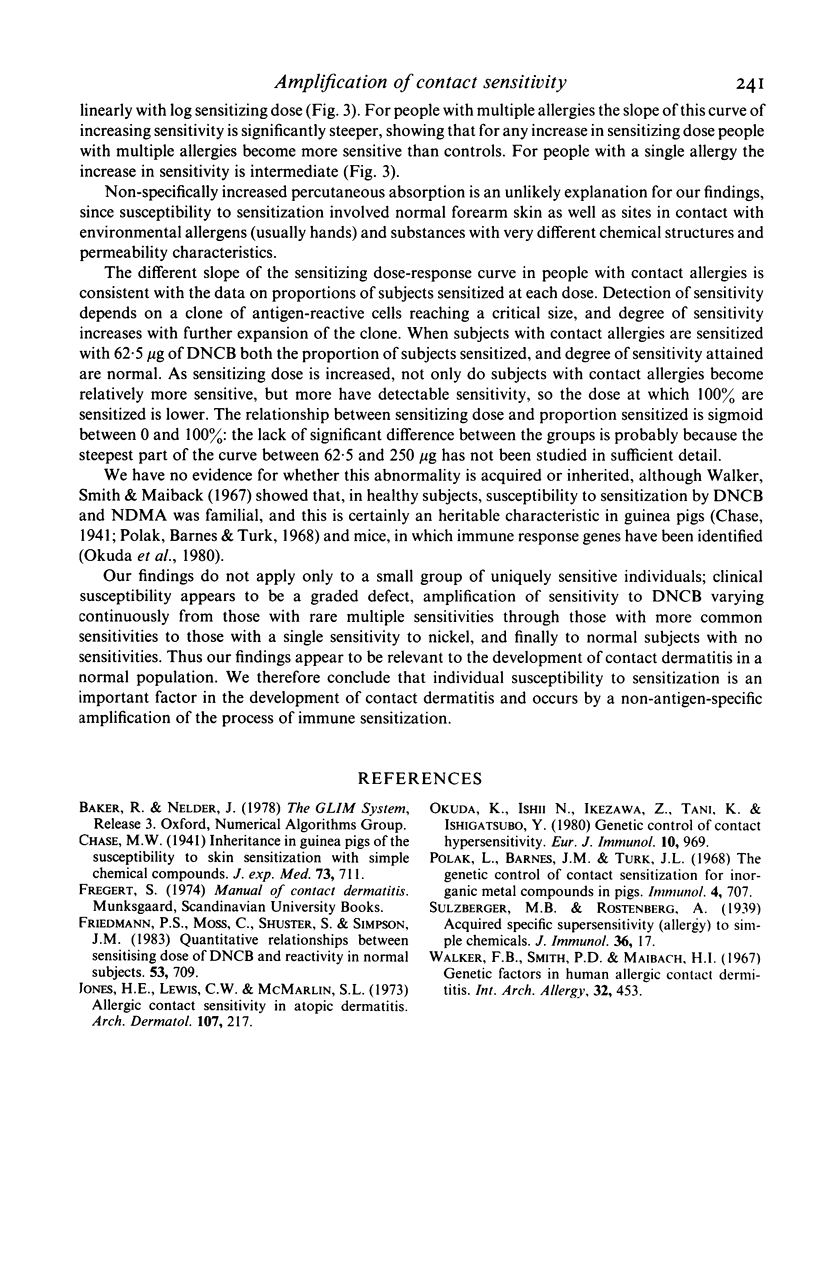
Selected References
These references are in PubMed. This may not be the complete list of references from this article.
- Friedmann P. S., Moss C., Shuster S., Simpson J. M. Quantitative relationships between sensitizing dose of DNCB and reactivity in normal subjects. Clin Exp Immunol. 1983 Sep;53(3):709–715. [PMC free article] [PubMed] [Google Scholar]
- Jones H. E., Lewis C. W., McMarlin S. L. Allergic contact sensitivity in atopic dermatitis. Arch Dermatol. 1973 Feb;107(2):217–222. [PubMed] [Google Scholar]
- Okuda K., Ishii N., Ikezawa Z., Tani K., Ishigatsubo Y. Genetic control of contact hypersensitivity. I. I-A subregion as well as non-H-2 loci codes for the gene of 2,4-dinitro-1-fluorobenzene antigen. Eur J Immunol. 1980 Dec;10(12):969–971. doi: 10.1002/eji.1830101215. [DOI] [PubMed] [Google Scholar]
- Polák L., Barnes J. M., Turk J. L. The genetic control of contact sensitization to inorganic metal compounds in guinea-pigs. Immunology. 1968 May;14(5):707–711. [PMC free article] [PubMed] [Google Scholar]
- Walker F. B., Smith P. D., Maibach H. I. Genetic factors in human allergic contact dermatitis. Int Arch Allergy Appl Immunol. 1967;32(5):453–462. doi: 10.1159/000229956. [DOI] [PubMed] [Google Scholar]


